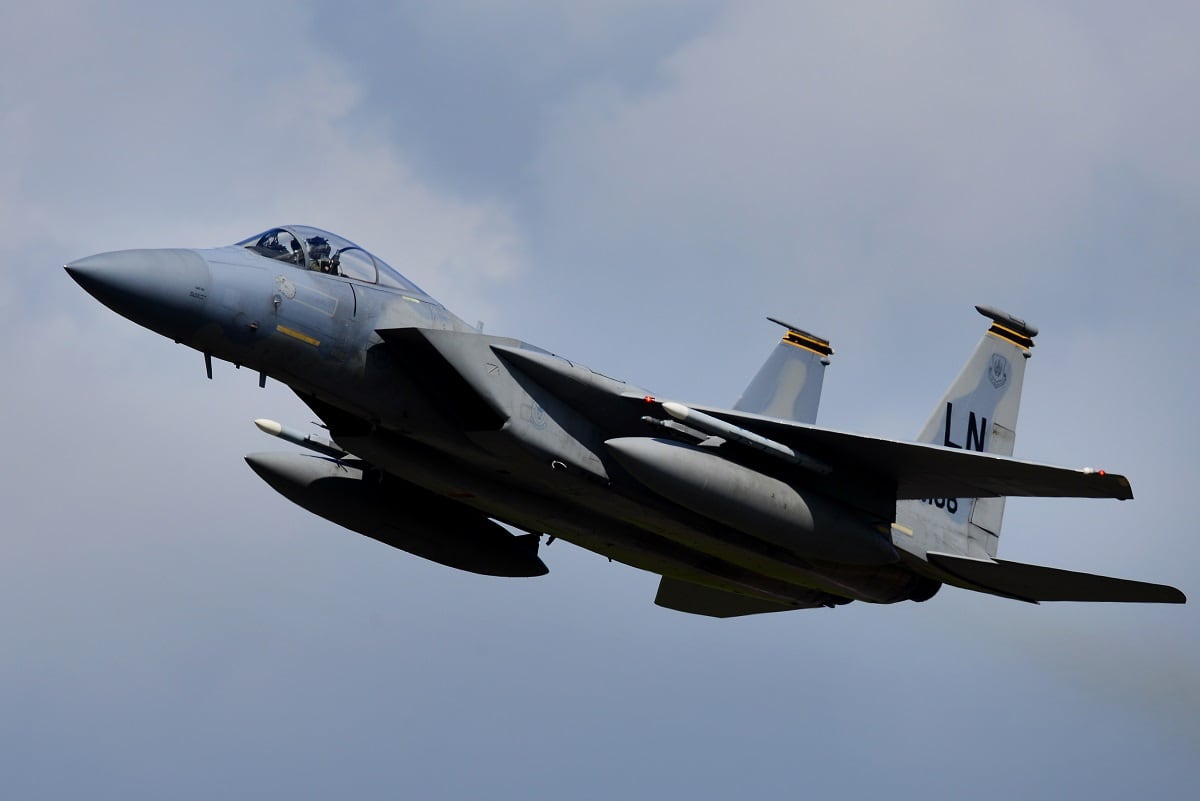An F-15C from Kadena Air Base in Japan crashed into the ocean last June due to pilot error, according to an accident investigation board report released Tuesday.
The report, released by Pacific Air Forces, found that the pilot made a mistake during a June 11, 2018, training sortie with an F-22 to practice basic fighter maneuvers. The F-15 was from the 44th Fighter Squadron, 18th Wing, at Kadena.
The F-15 pilot, who was the lead, was performing a defensive maneuver and climbed at 65 degrees, the report said. He then felt the fighter’s nose was not tracking the way he wanted it to, so significantly dropped the fighter’s nose to 65 degrees down and hard to the right, the report said. This resulted in a dramatic change in G-forces, from 1.2 Gs to -0.3 Gs, which caused the F-15 to go into “a negative G departure from controlled flight."
The fighter then transitioned to an inverted, negative-G spin and crashed into the Pacific Ocean, about 70 miles south of Kadena Air Base, at about 6:17 a.m., the report said.
The pilot ejected from the fighter at 1,100 feet above ground level and sustained serious injuries because of his extremely low ejection altitude, the report said. He was rescued by rescue forces from the Japan Air Self-Defense Force from Naha International Airport, and taken to a military hospital at Camp Foster, Japan.
The F-15 broke apart on impact and was completely destroyed, resulting in a loss of nearly $42.4 million.
RELATED

The accident investigation board president found that the crash was caused by the pilot’s improper application of the stick forward, with full right rudder, which caused the plane to simultaneously yaw and roll and depart from controlled flight.
The pilot’s spatial disorientation from the negative G forces, lack of emergency training for how to handle such negative-G departures from controlled flight, and short amount of time to analyze the situation and recover also “substantially contributed to the mishap,” the report said.
The pilot was current, qualified and experienced, the report said, and the aircraft was maintained properly and experiencing no malfunctions that contributed to the mishap.
PACAF said that after the crash, the 18th Operations Group at Kadena revised its training standards to give pilots more time to make decisions when experiencing similar situations. The group also increased its training and evaluation requirements for the handling characteristics for advanced aircraft.
Stephen Losey is the air warfare reporter for Defense News. He previously covered leadership and personnel issues at Air Force Times, and the Pentagon, special operations and air warfare at Military.com. He has traveled to the Middle East to cover U.S. Air Force operations.
